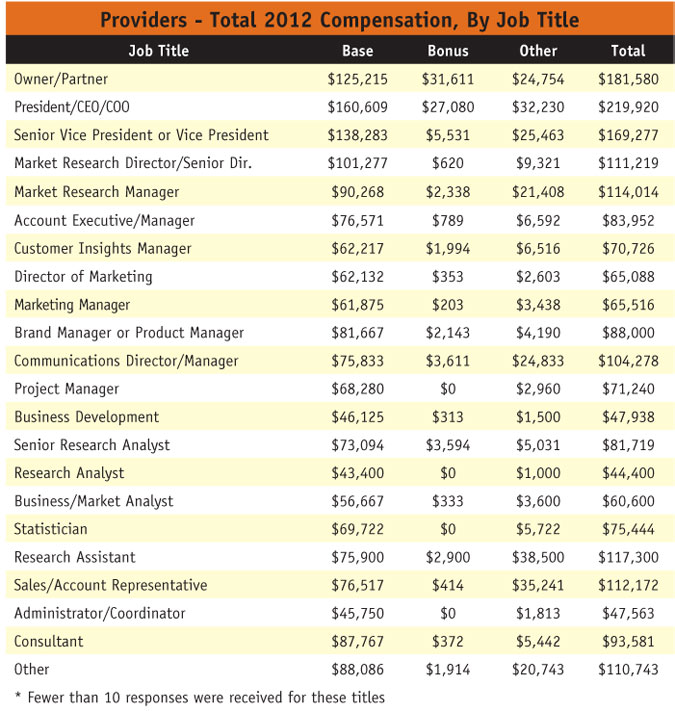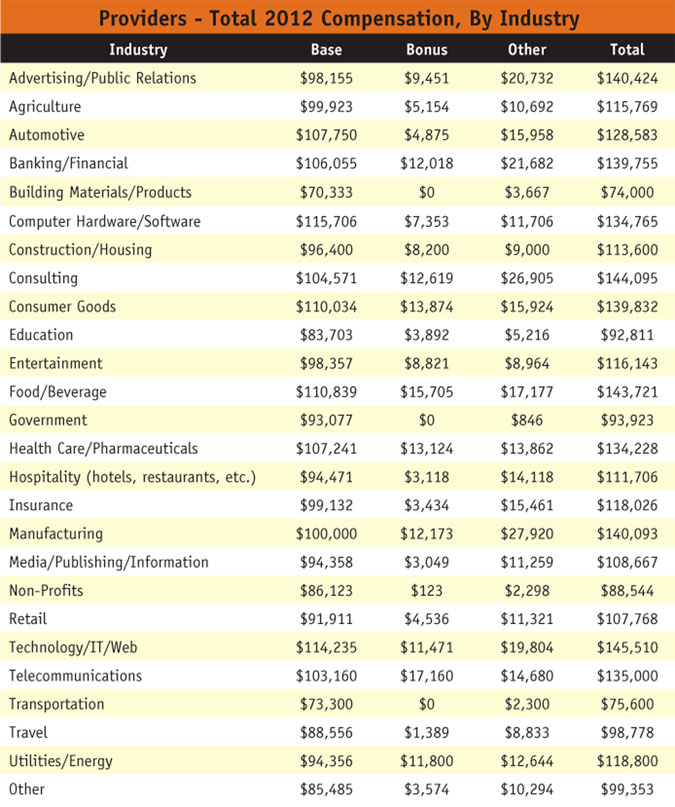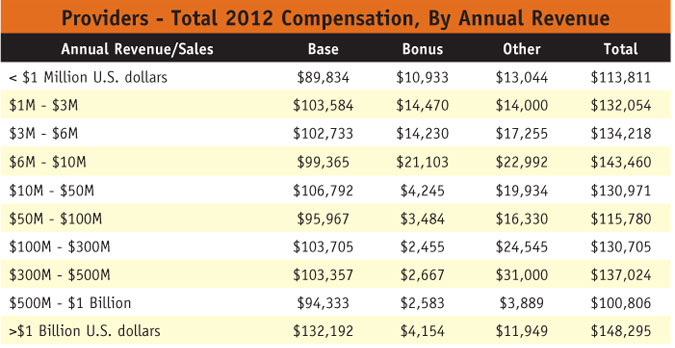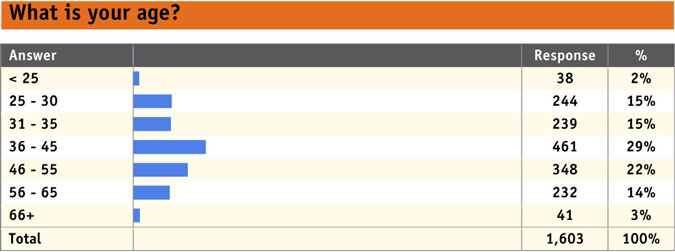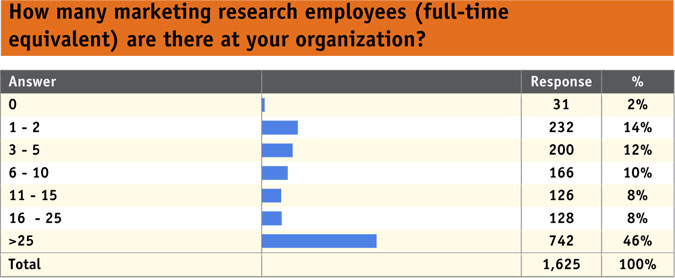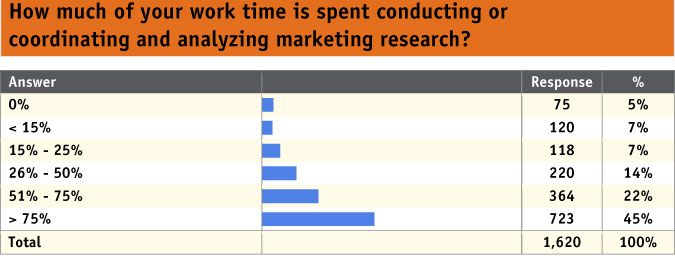Editor's note: This article appeared in the June 25, 2012, edition of Quirk's e-newsletter.
The June 2012 print edition of Quirk's features our annual report on the 2012 Quirk's salary survey of corporate researchers. We also collected data from nearly 1,300 provider-side researchers and the results were mostly positive and in keeping with data from the previous years. The good news is that salaries and bonuses are still increasing or, at the very least, holding steady. Additionally, although overall job satisfaction took a substantial hit in 2011 and hasn't yet rebounded, provider-side researchers may be coming to terms with this "new normal" because even fewer are planning to look for employment at a different company, even while job prospects stay strong.
Brightest piece
The brightest piece of data is that salaries on the whole seem to be increasing. While 42 percent of provider-side researchers reported that their salary stayed the same in 2012 compared to 2011, almost 50 percent reported an increase in salary and almost 10 percent reported a salary increase of over 10 percent. These results are slightly down from a gangbusters year in 2011 but salary increases were still more prevalent on the provider side than the client side, where only 5.66 percent reported a salary increase of more than 10 percent.
Continuing in this vein, bonuses also held strong in 2012. Fifty-two percent reported that their bonus stayed the same in 2012 and for those who did see a change, it was likely for the better. Twenty-seven percent reported an increase in bonus in 2012, while 21 percent saw a decrease. Unfortunately, over 12 percent saw their bonus decrease by more than 10 percent.
Generally speaking, as with the client-side researchers, the most money stands to be made on the U.S. coasts. The highest average salary by region is in the Northeast ($170,675), followed by the Pacific Coast ($144,509).
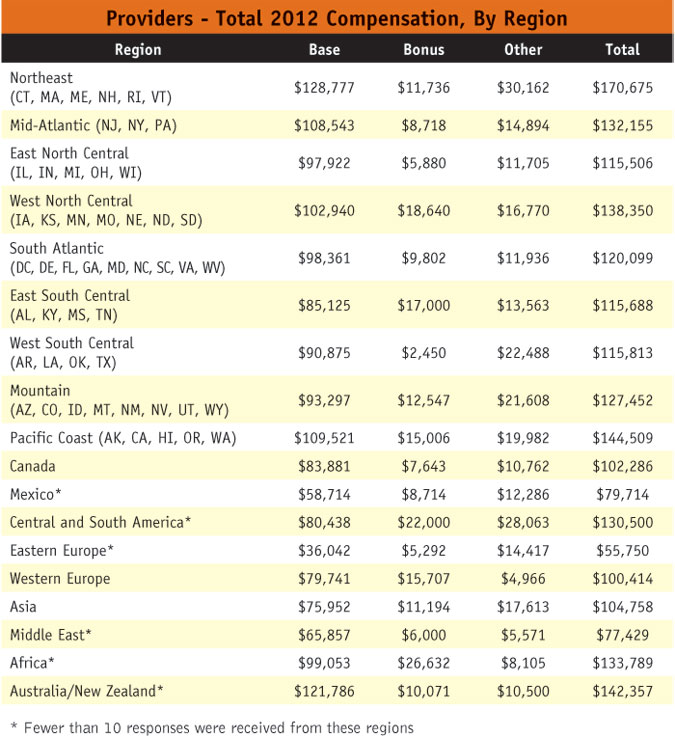
Isn't looking much better
After reporting a decline in job satisfaction in 2011 over 2010, it seems that 2012 isn't looking much better, as the percentage of respondents who reported being somewhat satisfied (20 percent), satisfied (32 percent) or very satisfied (17 percent) increased by only 1 percent (69 percent vs. 68 percent in 2011). This figure is 4 percent lower than client-side researchers who reported being somewhat satisfied, satisfied or very satisfied with current employment.
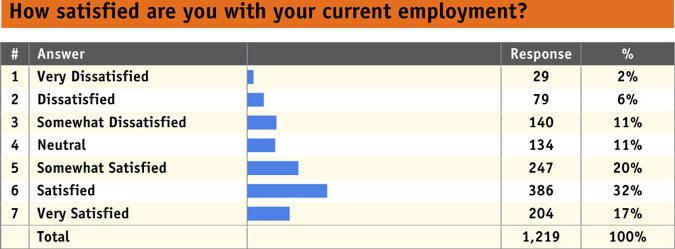
However, the dip in job satisfaction doesn't have many provider-side researchers running for the door. In 2011, after a 20 percent drop from 2010, 41 percent of researchers said they were somewhat unlikely (8 percent), unlikely (17 percent) or very unlikely (16 percent) to seek new employment at a different company. That number increased to 51 percent in 2012, indicating that more provider-side researchers plan to stay put.
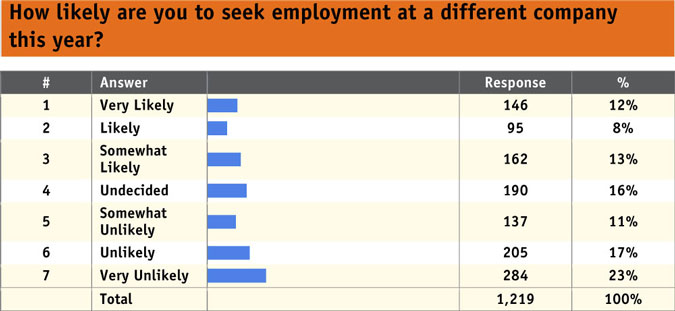
A very strong link
Unlike the client-side cohort, there is a very strong link between salary and job satisfaction. Provider-side researchers who reported being very satisfied with their current employment earned an average of $53,720 more than those who reported being very dissatisfied ($140,030 vs. $86,310). Interestingly, the next-highest-paid group of provider-side researchers by satisfaction were those who reported neutral satisfaction ($123,376 average salary).
As in years past, job prospects are still much more promising on the provider side than on the client side. The likelihood of provider-side companies hiring additional marketing research employees in 2012 is nearly identical to the results from 2011: 63 percent of researchers reported that their companies are somewhat likely (17 percent), likely (14 percent) or very likely (32 percent) to hire additional marketing research employees, compared to 62 percent in 2011 (13 percent somewhat likely; 17 percent likely; and 32 percent very likely). Interestingly, these numbers are almost inverse of the 2012 results for client-side researchers, where 52 percent are very unlikely (25 percent), unlikely (16 percent) or somewhat unlikely (11 percent) to hire additional research employees in 2012.
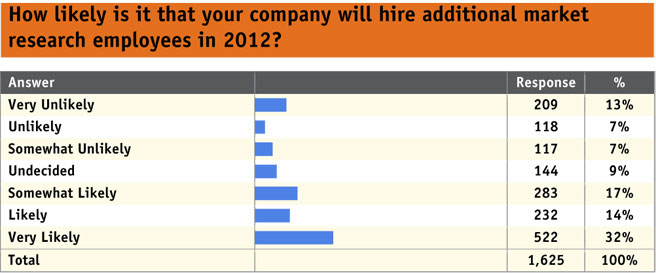
Remained constant
In terms of education, survey results have remained constant for the past three years, with the number of provider-side researchers who reported having a high-school diploma (5 percent), bachelor's degree (46 percent), master's degree (41 percent) or doctorate (8 percent) all remaining with a few percentage points of previous results. However, a look at the differences education level between provider- and client-side researchers reveals that those on the client side have a bit of an edge in academics: 87 and 92 percent of researchers on the provider and client side have a bachelor's or master's degree, respectively, while 57 percent of client-side researchers have a master's degree, compared to only 41 percent of provider-side researchers. Nearly the same percentage of researchers on both the provider and client sides hold a professional or industry certification related to marketing research (19 percent of provider-side researchers reported having related certification; 20 percent of client-side researchers).


Experience-wise, provider-side researchers are still maintaining an edge over their client-side counterparts, as 21 percent claim more than 25 years of experience in marketing research, compared to just 12 percent on the client side. Nevertheless, it's mostly apples to apples as 62 and 58 percent of provider- and client-side researchers have over 10 years of experience, respectively.
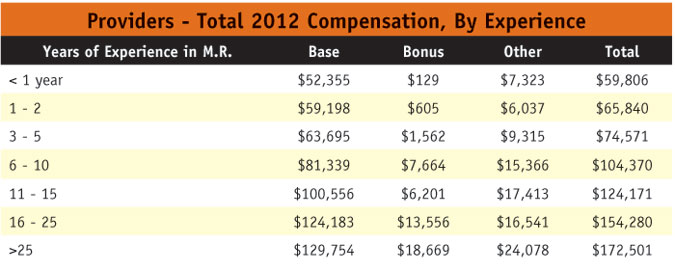
What's on their minds
We always include a few open-end questions to allow respondents to tell us what's on their minds. We've long known - and joked - that researchers are nosy by nature but we wanted to know what you want to know. So this year for the first time, we asked respondents what information, aside from compensation, they would like to know from their peers at other companies. Respondents posed various questions about technology and what techniques researchers expect to use more of in the future but the three main threads focused on corporate culture, how many hours other researchers are working and what researchers are doing to further their education in the field.
Corporate culture
Perhaps wondering if the grass is greener elsewhere, many researchers wanted to know what the general impressions are of other companies and how employees are treated, such as how successes are celebrated; what sort of team-building exercises are planned; and what the company does to keep morale high. Here are a few example of what researchers wanted to know about the corporate culture in peer organizations:
"Do you get comp time for working many overtime hours? Are you able to work remotely?"
"What other non-salary perks do you have?"
"What additional benefits does your company provide that really make a difference in the culture of the company (i.e., Friday lunches)?"
"What is the ideal work environment for a researcher (e.g., relaxed, structured, strict, etc.)?"
"Any perks or benefits of their job (i.e., amount of vacation time, company cars, etc.)."
"What is the corporate culture like? How well does your company prioritize? Is everything high-priority-rush and creating extra, unnecessary stress?"
"Job satisfaction, perks, ease of promotion."
"What other ways are you compensated in your company, if not by annual salary?"
"Is it an easy and brisk environment or serious and stressful?"
"How do you feel about the environment of different departments? Friendly? Ignorant?"
Hours worked

Every year we ask our respondents if they are working fewer, more or the same hours as in the past but researchers want to know what's par for the course. Are they putting in more or less time than their peers? What is the general expectation for availability in the industry?
"How many hours a week do you work?"
"Hours worked daily on average."
"Do you need to have late sittings after office hours?"
"How often and strong is overtime work?"
Additionally, something tells us researchers are working more than the standard nine-to-five, as many are curious as to how their peers are handing the work-life balance. Several asked how researchers juggle career and personal and how, if at all, researchers find balance with such great demands on their time.
Self-improvement
Finally, researchers were curious about what industry professionals are doing to improve their skills and advance their training. As mentioned previously, only 20 percent of client- and provider-side researchers report holding certification but the interest is certainly there.
"What steps have you taken to advance your career? Has attaining additional education/credentials helped or has it been networking within the market research community?"
"How often do you participate in certification/training activities?"
"Opportunities to grow and learn new methodologies, approaches and innovations. Does this happen? What are the opportunities? What form do they come in?"
"Where are the best opportunities for career growth and advancement?"
Work smarter, not harder
Given that we are four years post-U.S. economic fallout, it may be comforting for many to know that at least in the research industry, it's steady as she goes. We may not have rebounded to the heights of the industry before the Great Recession but it's possible that we've reset: Welcome to the new normal. As researchers adjust, the solution - and also the challenge - may be to find a way to use all of the new technology available in the industry to work smarter, not harder, to inch closer to the elusive work-life balance that so many are concerned with.
